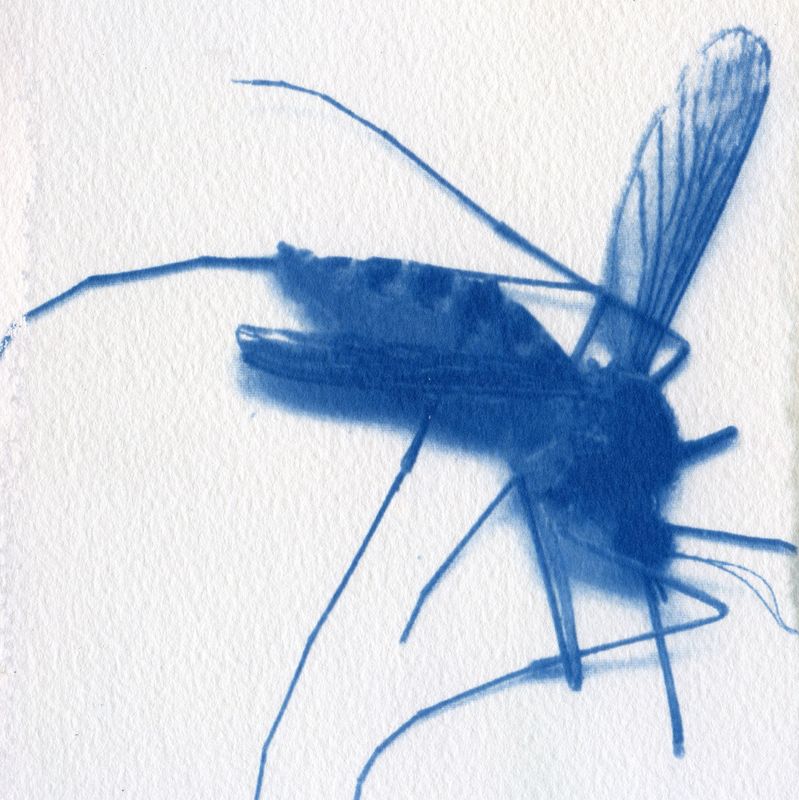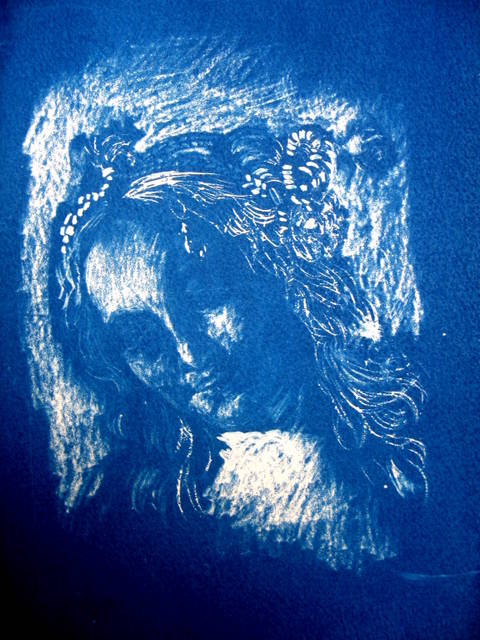Whether you are a beginner or professional artist, we can support you with your creative practice. In this section you can read about One-to-One Tuition, our workshop programme and bespoke workshops. Also included here is information on Editioning, an important element of good printmaking practice and an overview summary of the printmaking practices supported in the Studio.
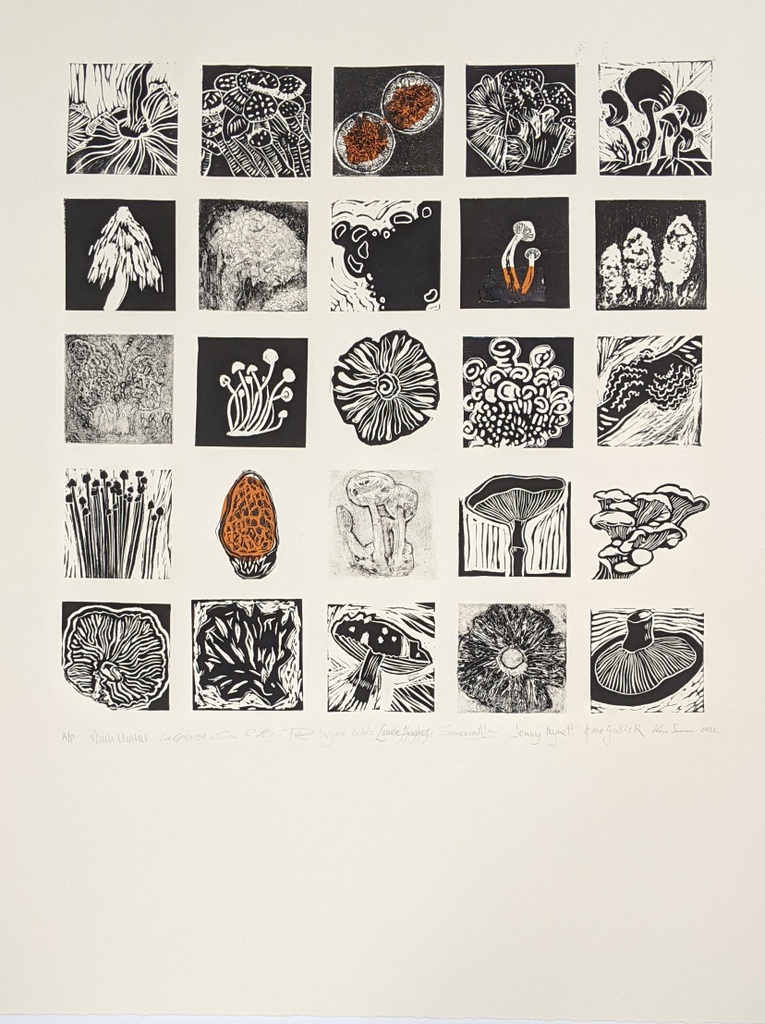
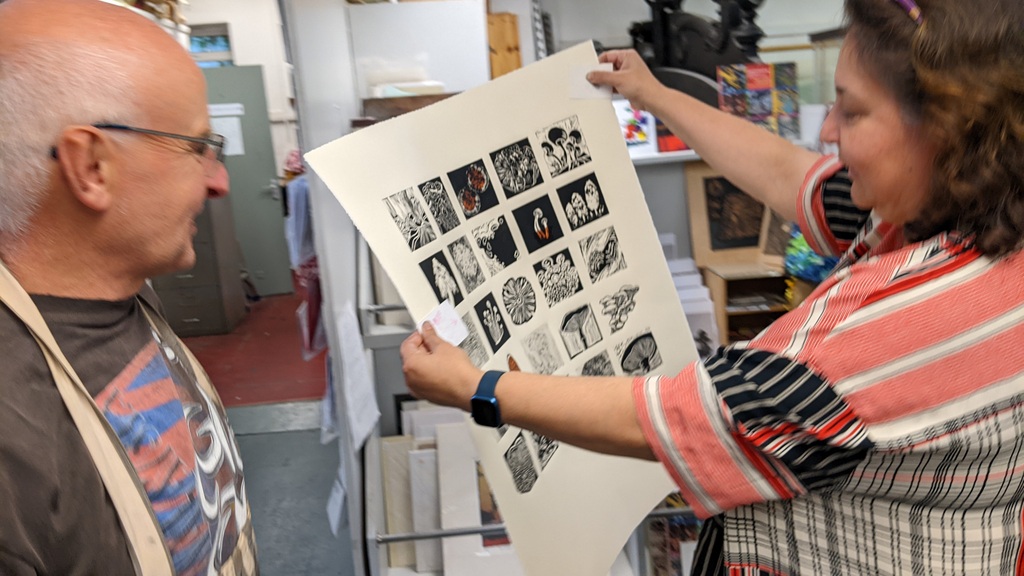
One to One Sessions
One to One sessions are a good way of learning a new technique or brushing up on a technique you have already done. They are individually tailored to your needs and at a time convenient to you rather than you having to wait for a workshop programme event.
Each session is for 3 hours and with an expert teacher. You can book a single or double session (as a day session) This will depend on the technique and what your individual needs and will be discussed with the teacher prior to the session/s.
Please note that for some printmaking techniques you will need more than a single One to One session to become proficient enough to use the Studio facilities independently. The teacher can give you advice on this.
Price is on request. (For example, in 2022, the daily rate for the teacher was £200, or £100 for a half day.) Please NOTE price will be for teaching time only. Any materials used will be charged on top.
Costs can be shared with others requiring the same tuition.
To discuss your requirements please go to Keeping in Touch.
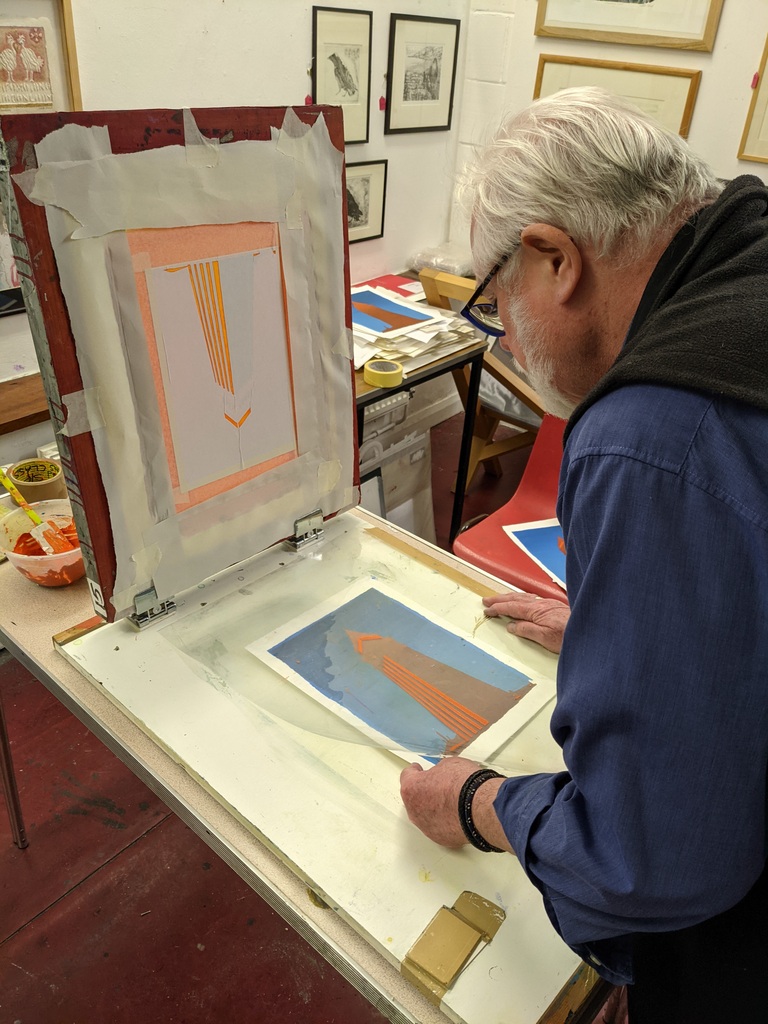
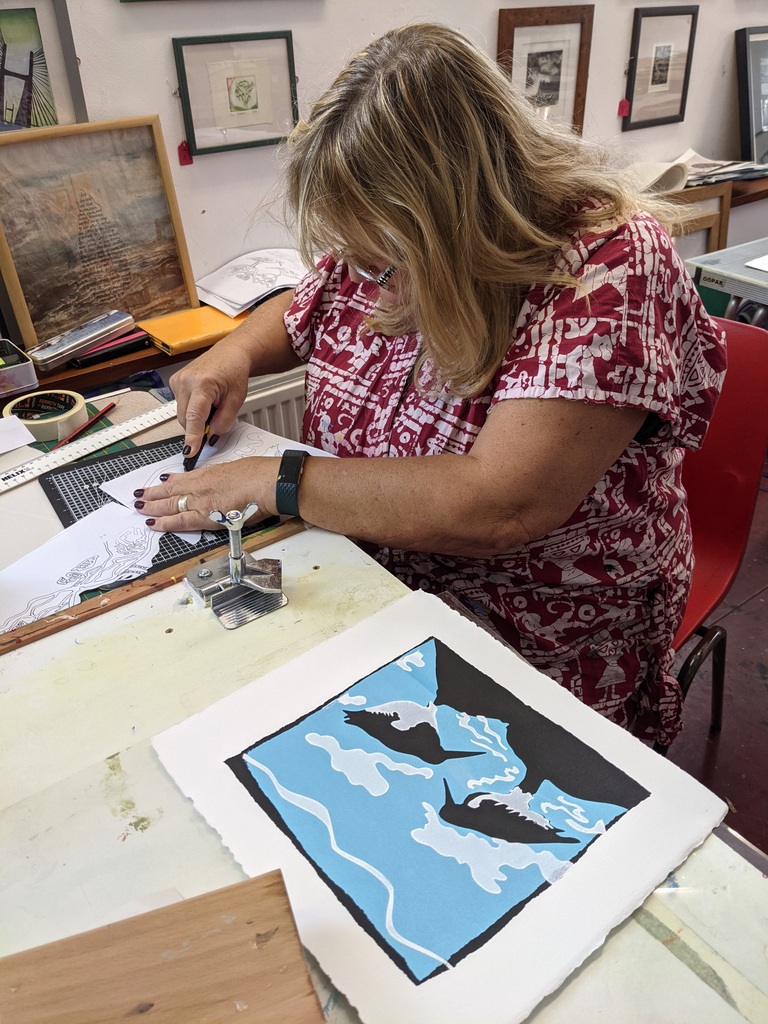
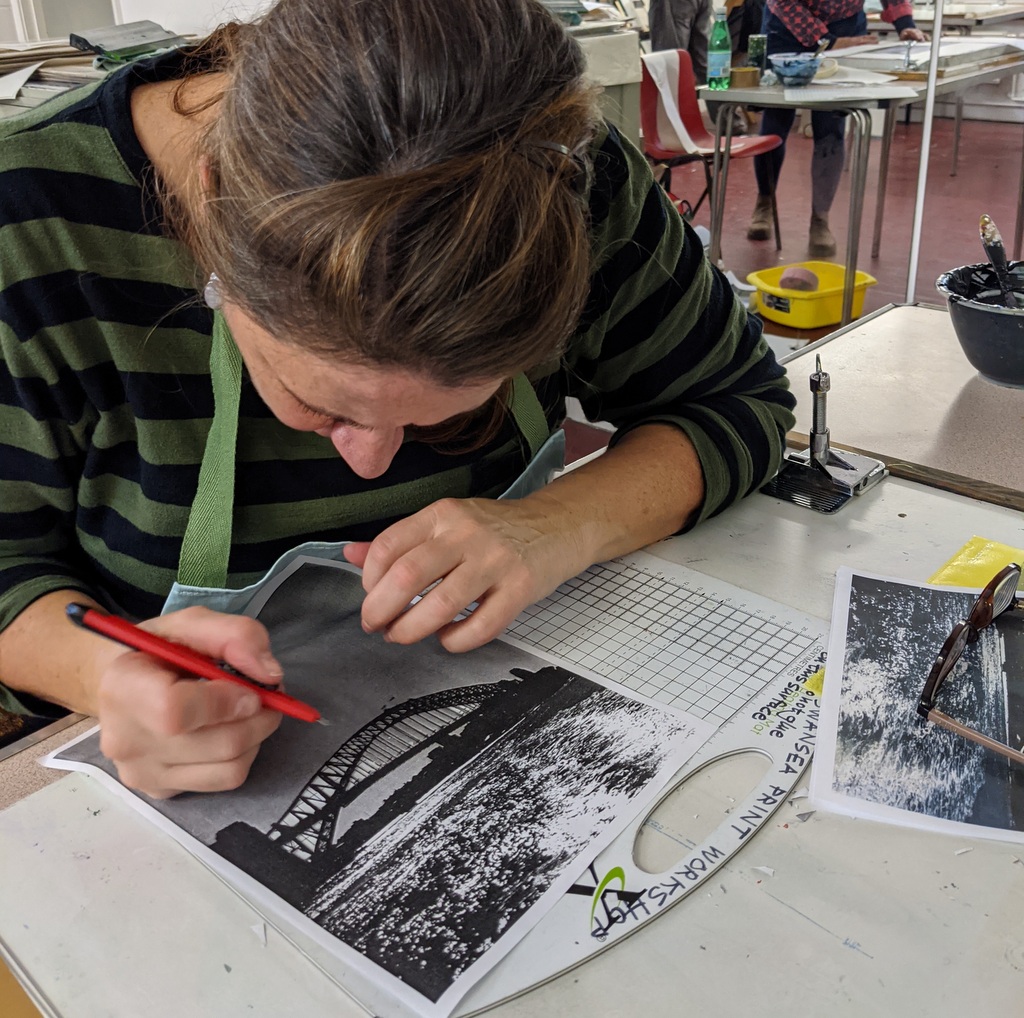
Workshop Programme
We offer workshops for people at all levels – from the complete beginner to the professional artist or practised printmaker – to enrich your creative skills. All members pay a discounted rate for workshops. Throughout the year, the programme offers opportunities to learn and develop your practice with a range of experienced tutors who each bring their unique approaches to printmaking and other creative practices such as book- and paper making. You don’t have to be able to draw – some of the printmaking processes use a collage or photographic approach to image-making.
We keep our numbers small, just six to a group to allow plenty of individual attention from the tutor and a good working space for everyone. All materials are supplied and included in the price.
Workshops are added to our Workshop Programme throughout the year. We publish details on our website, social media and through our newsletters.
Bespoke Workshops
If there isn’t a course or workshop scheduled which fits your needs, we can design a course for you or your group for an event or celebration. We will also consider repeating a workshop in our programme if there is demand.
You can see the variety of workshops and printmaking techniques that we are offering in our current programme here. Below you can find a list of the main processes we offer and more detailed workshop profiles are available here.
We are always happy to discuss other options and ideas and create the workshop or training to suit you. See Keeping in Touch for how to contact us.
Editioning
Editioning is an important element of printmaking practice. We encourage members to produce small editions as it is a good discipline and develops skills and experience in all aspects of printmaking.
When developing a print a series of ‘proofs’ are made to determine how the final print should look. These are exploratory prints and are called Artists Proofs. They can be unique as various colourways are explored or the plate altered.
Editioning is the process of producing a defined number of copies of the final print. This can be anything from under 10 up to 500 or more depending on how successful the printmaker is at selling his or her prints. It is not unusual for a printmaker to print only part of the edition initially and to print more only when these have been sold. In this case, proofs must be kept to carefully match the earlier edition copies and notes on how the colours were mixed are essential.
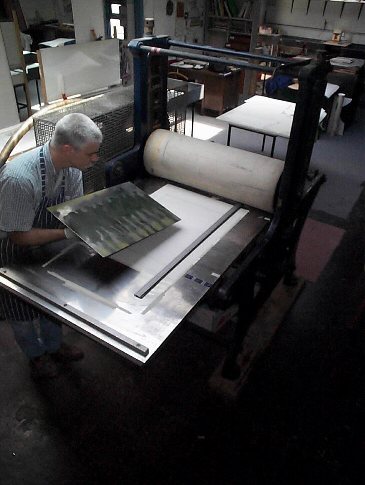
An edition can be printed by the artist or a professional printer. It is essential that the artist is fully involved in the process of making the blocks, plates or screens, otherwise the process is more akin to a commercial reproduction than an original print.
Finished prints are signed by the artist in pencil to signify they are approved. This is usually done on the lower right-hand corner under the image. If there is a title, it is usually in the middle. All prints are given a unique number. For example, 8/50 is the eighth print from a limited edition of 50.
Once the edition has been printed it is usual to cancel the blocks in some way by defacing them. A print can be taken as evidence of this.
Good quality paper should be used for an edition.
If you are editioning we can order in paper specifically for you. If you are printing a large edition, the studio and press area/s can be hired out. Please contact us for fees and availability. See Keeping in Touch for how to contact us.
Print Processes
Below are the main areas of processes and approaches that we offer in the Studio through our projects and Workshop Programme. For more detailed information please see our Printmaking Processes and our Workshop Profiles
RELIEF PRINTING
Monoprint
A basic introduction to printmaking and how marks can be transferred from one surface to another – even if you don’t have a press.
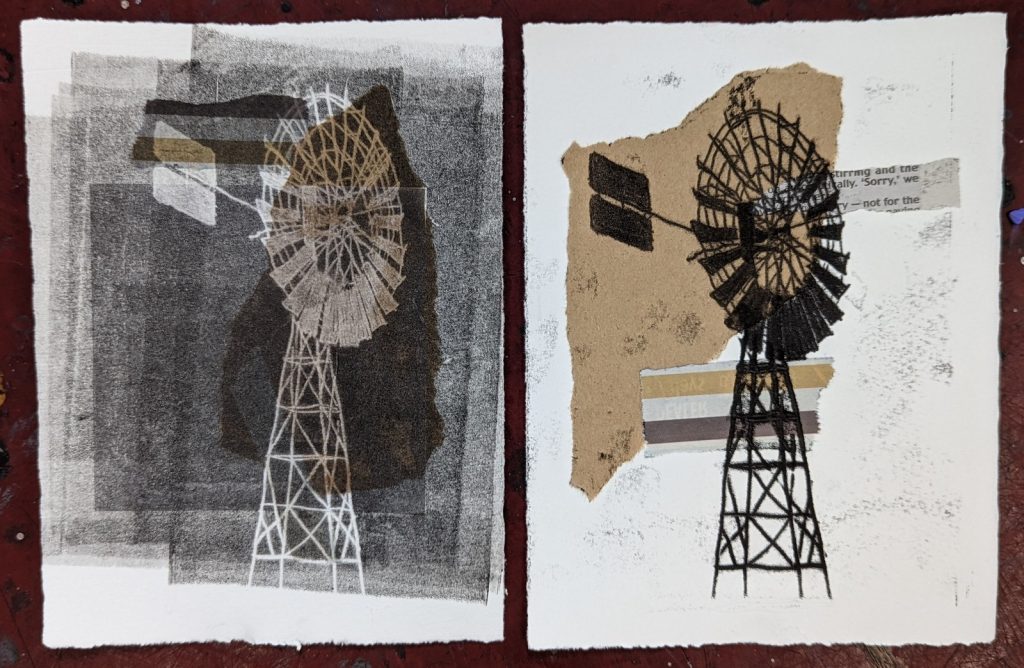
Monotype
The 3-colour reduction monotype technique is ideal for those who draw and paint. Recommended for those with previous experience of basic monotype techniques and / or reduction drawing techniques such as manier noir.
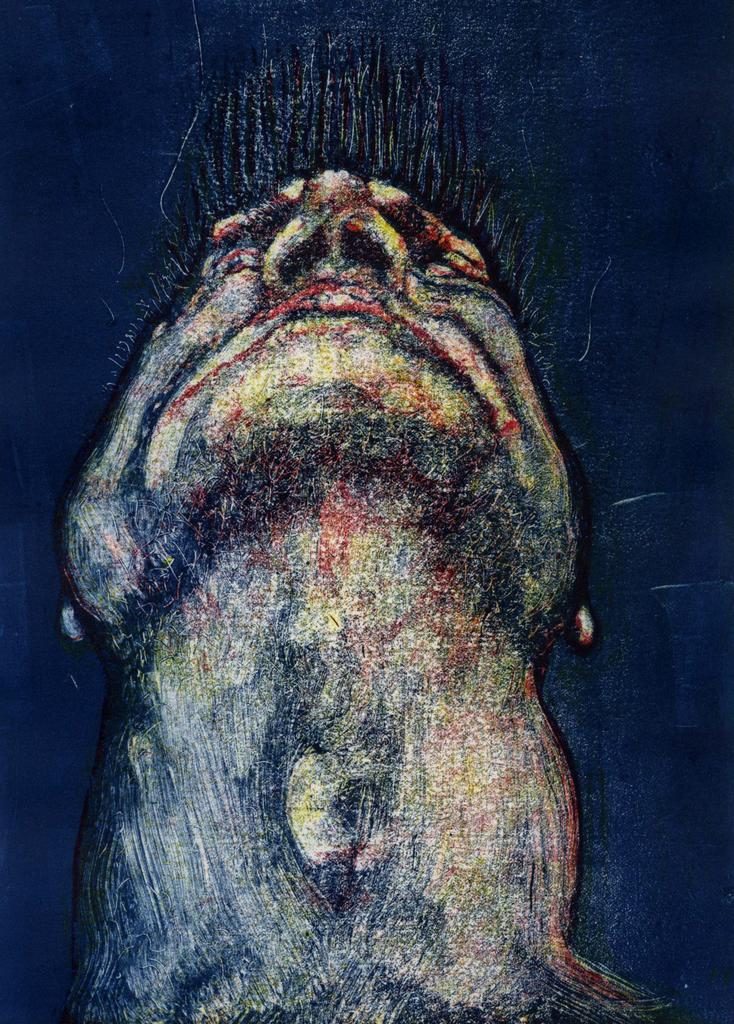
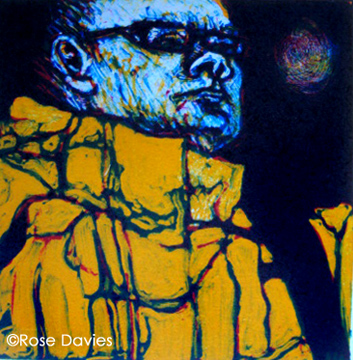

Linocut
Linocuts are developed by cutting away some of the surface to form an image, leaving an area in relief which can be ‘inked up’ with a roller and then put through a press or burnished with a wooden spoon to make a print. There are more modern materials that have been developed using the same process. We stock both lino and an alternative doublesided vinyl
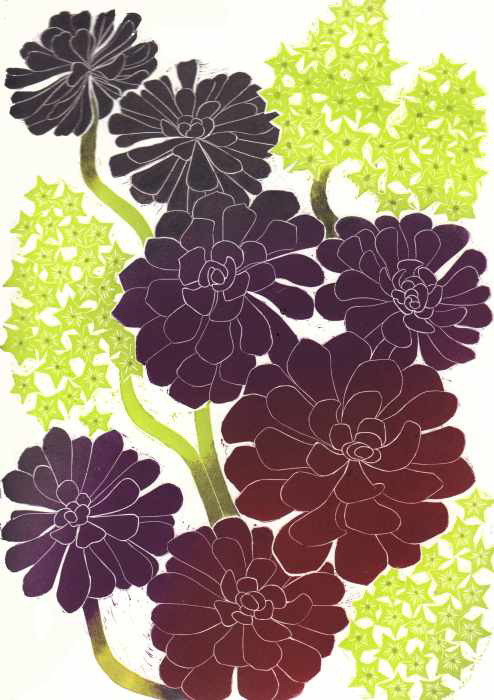
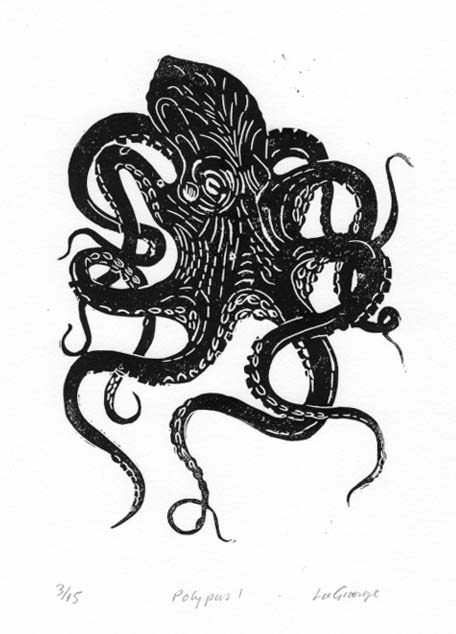
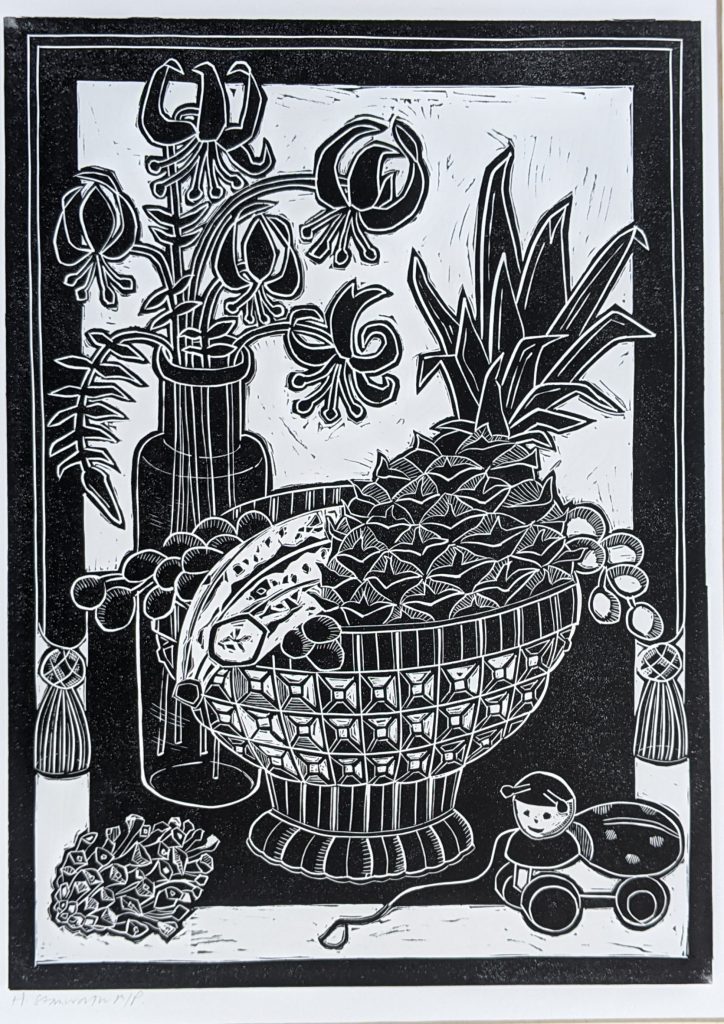
Lino-etch
Lino Etch | lino is etched rather than cut in the traditional way producing a very different printed result.

Reduction Linocut
This process gives you a multicolour print using only one block which is successively cut away and printed.
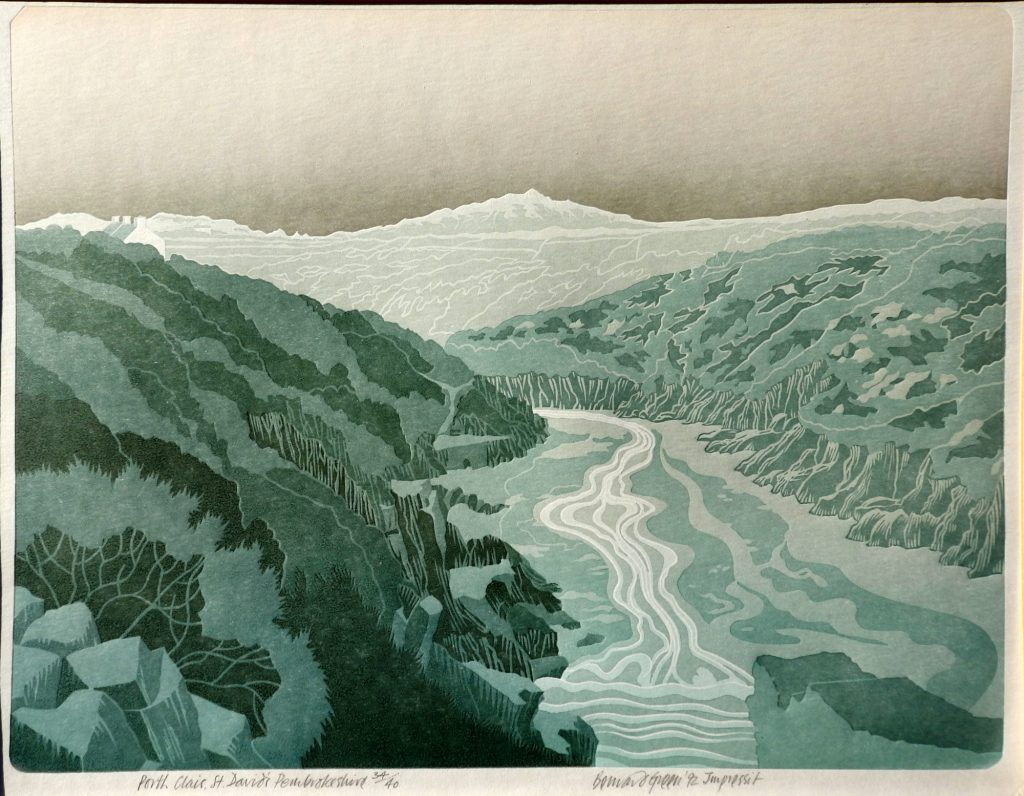
Wood engraving
Uses woodblocks cut across the grain or a resin block to give a much finer surface for engraving. A modern alternative is a resin block. The engraving tools allow for a technique that is much finer than a linocut.
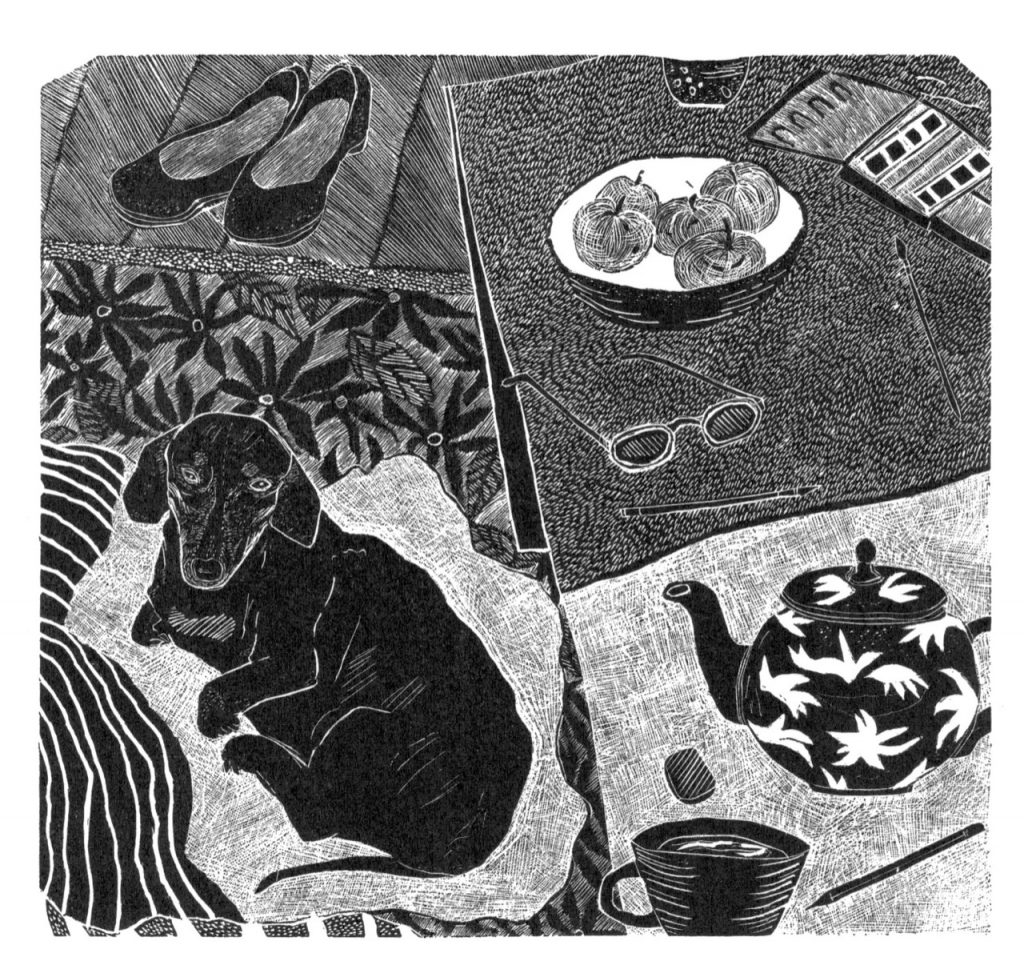
Letterpress
Printing from type or wooden blocks.
We have a small selection of wooden type in the studio which has to be printed on the Columbian Press
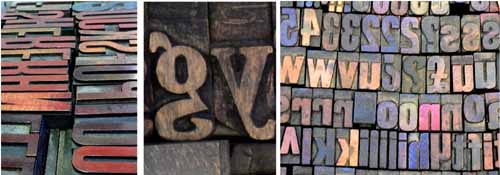
INTAGLIO
These processes require ink to be laid in the recesses of a plate or block rather than on the surface. A huge range of effects can be obtained through selective inking
Collagraph
Enables artists to produce a richly textured print from a flat collage they have created by using a wide range of flat textured materials.
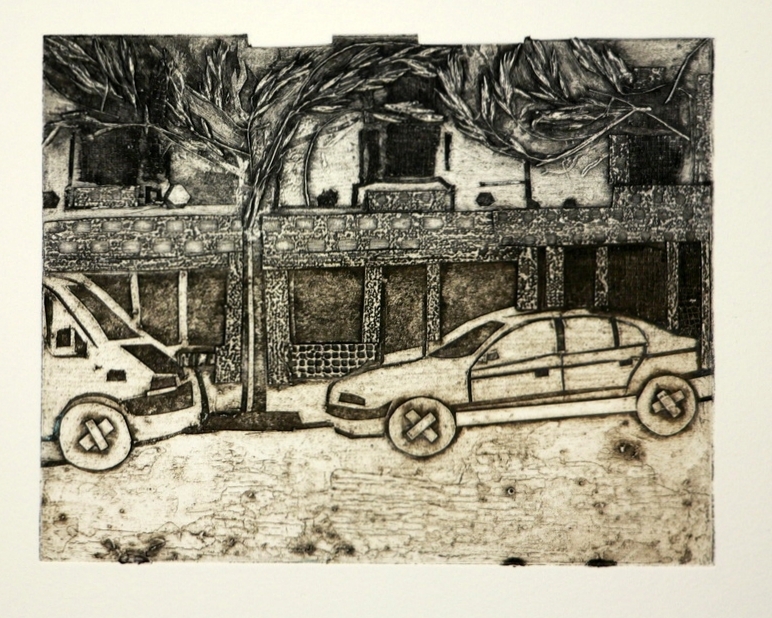
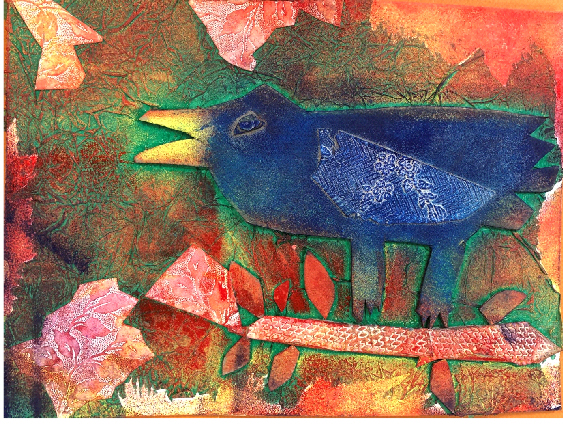
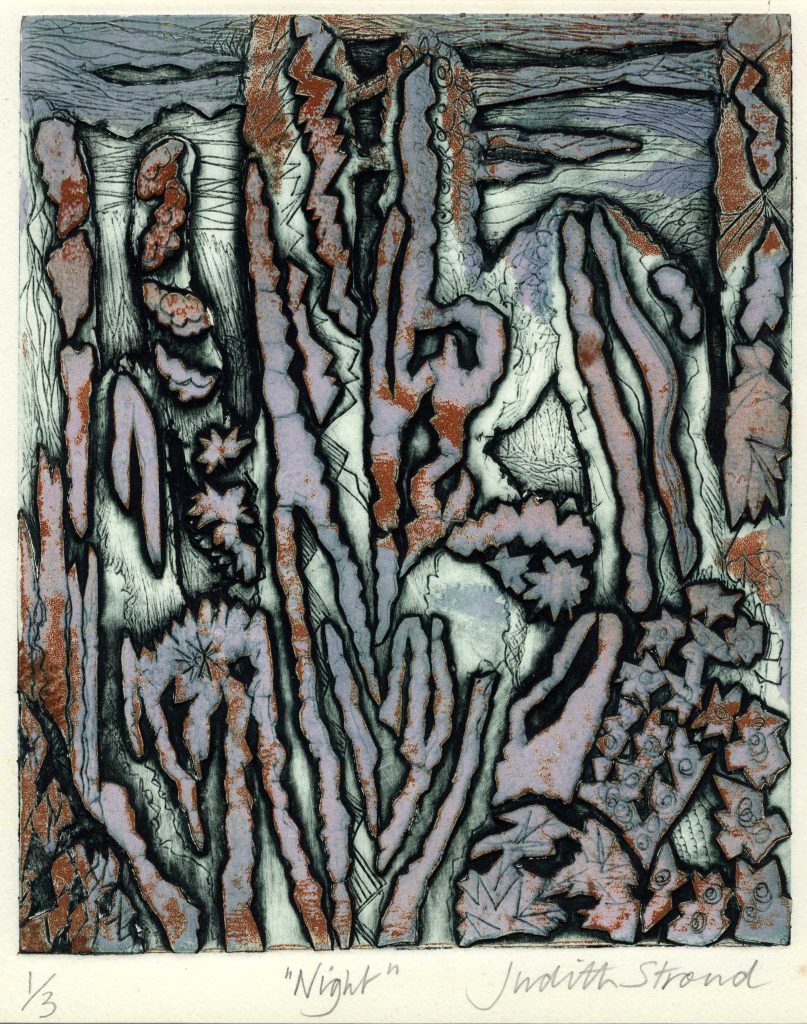
Etching
This is an intaglio technique using copper, zinc and aluminium plates. Aquatint, Soft Ground and Coffee lift are all techniques which add tone and texture.
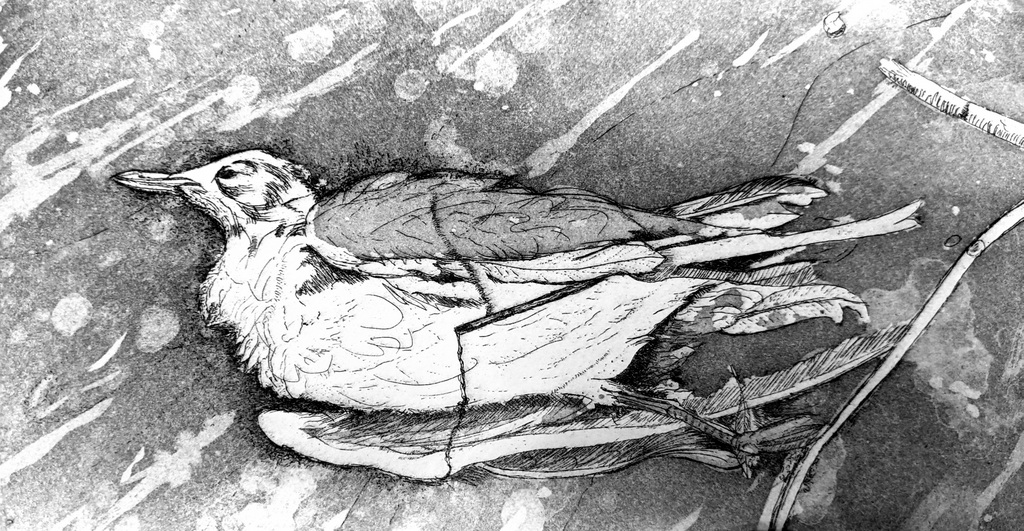
Drypoint
Plastic coated card plates offer a very versatile medium that allows for all sorts of development not possible with metal plates.
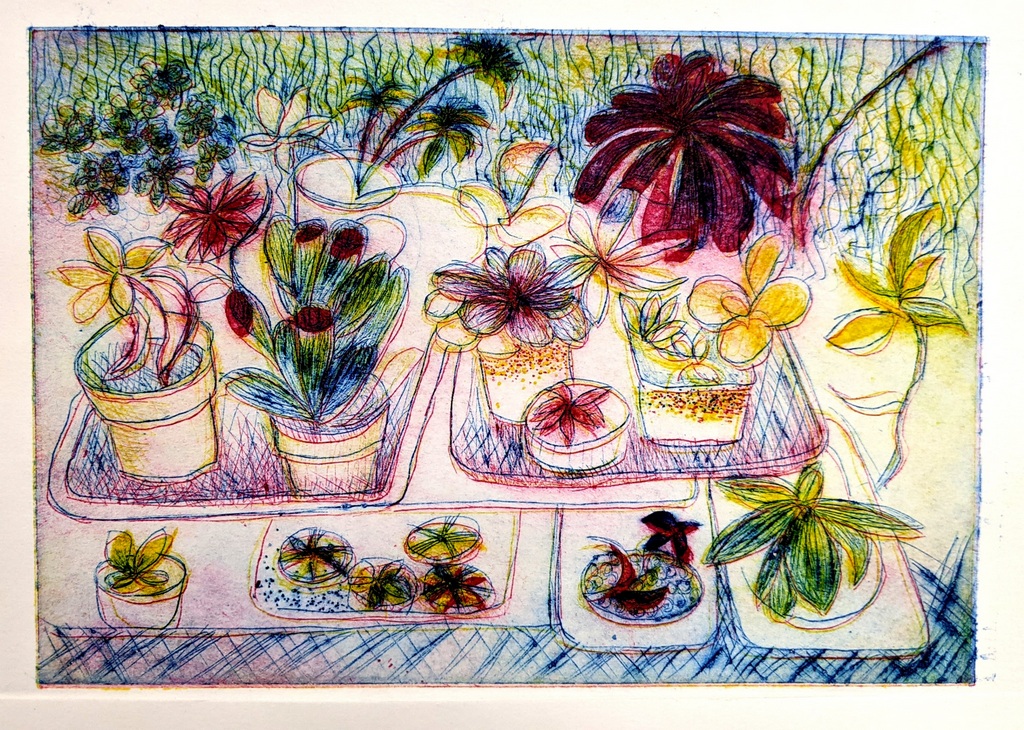
Screenprinting
A wide range of printing effects are available using simple stencils and photo-generated images with a wide range of colour effects
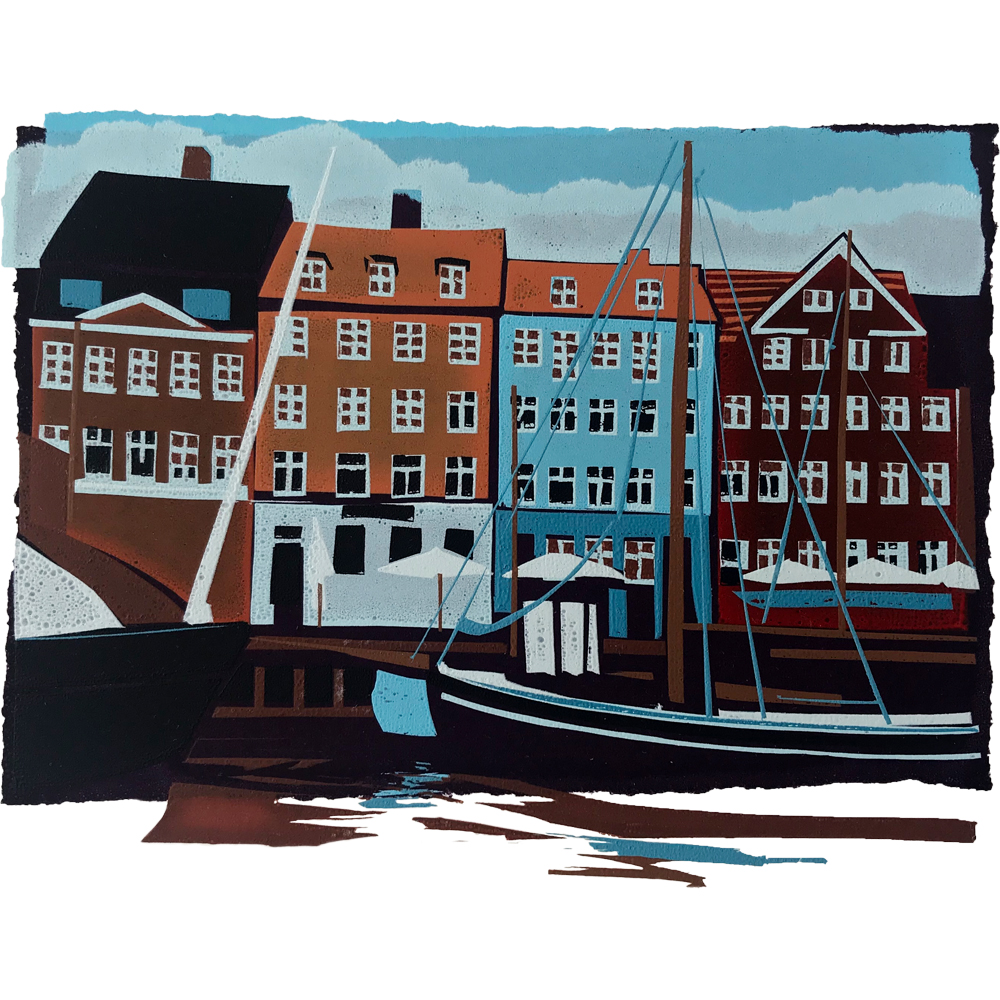
Cyanotype
A light sensitive emulsion is coated on paper or fabric and then exposed to light through a stencil/ an object or a transparency
